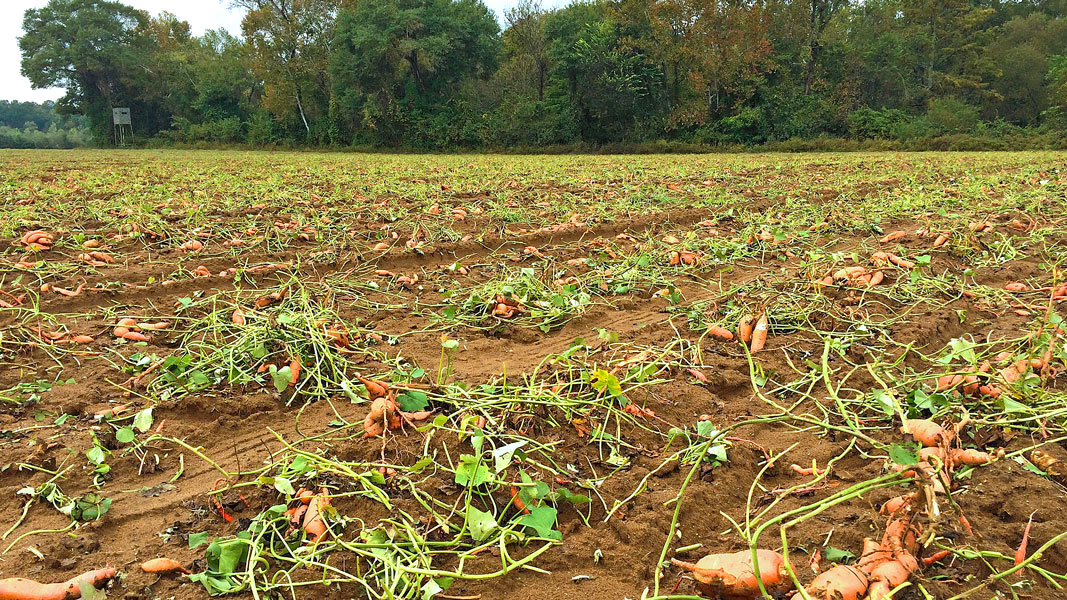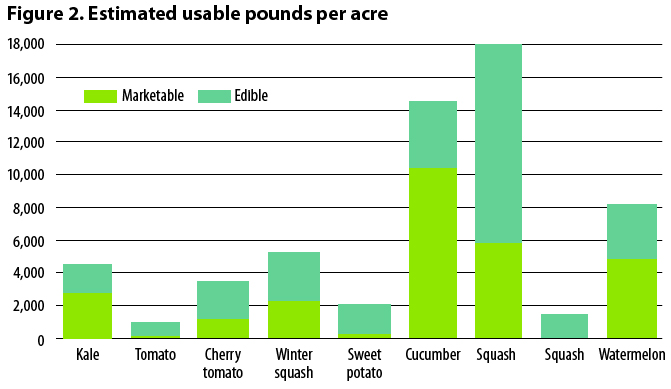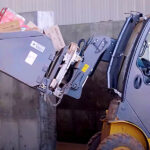Top: Unharvested squash in a Tennessee farm field.
T. O’Donnell, J. Hunter, L. Johnson and K. Charick
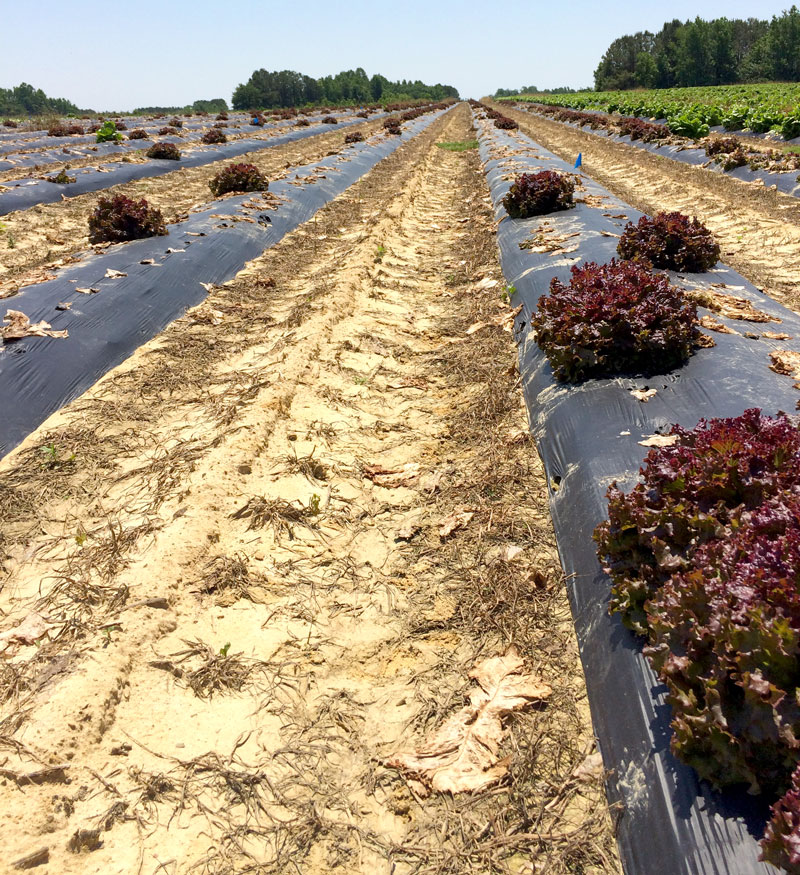
The research team focused on the highest volume crops because that is where the most significant economic and environmental opportunities exist. Article photos by Dr. Lisa Johnson and the Society of St. Andrew
The amount of unharvested but still edible food left on farms in the United States is staggering. In 2022 alone, nearly 15 million tons of usable produce was never harvested (ReFED, 2024), equivalent to about 30 billion daily servings and a potential multibillion dollar loss to farmers every year. Estimates cited in the U.S. Environmental Protection Agency’s (EPA) Farm to Kitchen report suggest that total losses may be even greater (Jaglo, et al., 2021). Beyond forgone revenue, the greatest benefit of reducing food loss and waste is environmental. Prevention of waste brings the greatest greenhouse emission reductions along with reduced impacts associated with fertilizer and water usage. This is particularly true for fruits and vegetables.
Recognizing the critical need for a more precise understanding of the issue, the U.S. EPA, alongside the U.S Department of Agriculture (USDA), and the Food and Drug Administration (FDA), released its draft National Strategy for Food Waste Reduction in December 2023 (U.S. EPA, 2023). The Strategy highlighted a glaring gap in actual measurements of unharvested produce. While there have been a handful of studies, the lack of quantifiable data seriously complicates efforts to encourage more efficient harvesting practices and more productive uses for the surplus food. Without clear national estimates of edible unharvested food, the USDA has struggled to understand how much food is in fact available in our food supply (Astill, 2020). It is therefore difficult to measure progress towards the U.S. 2030 Food Loss and Waste Reduction Goal without accurate baseline data.
Importance Of Accurate Measurement
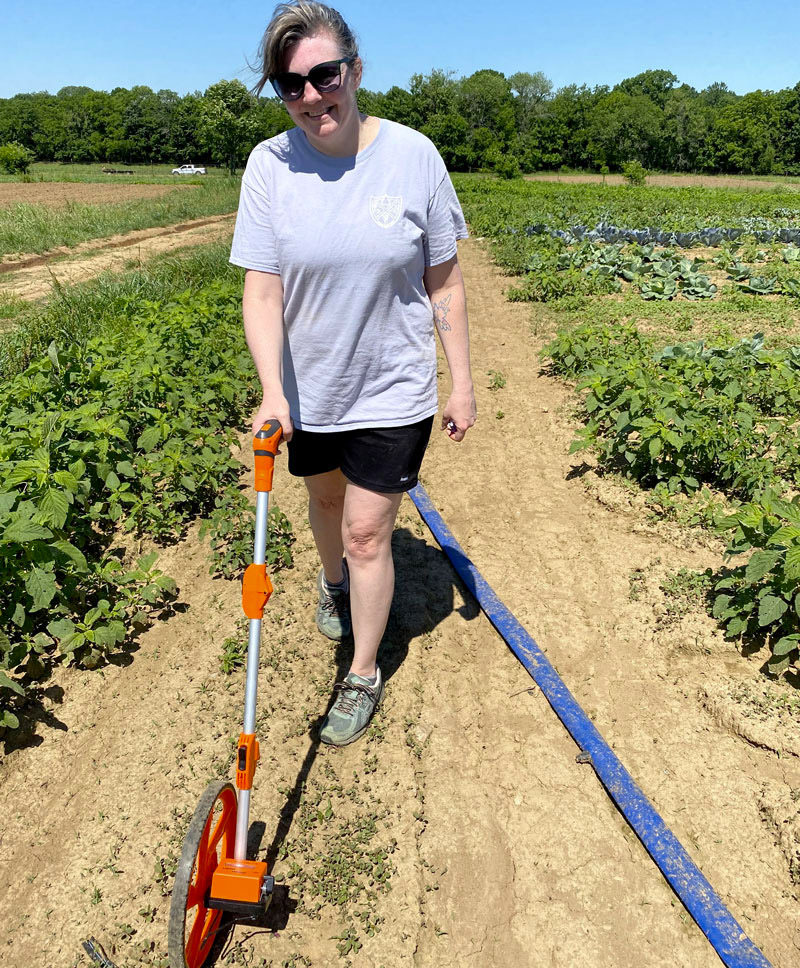
Jeannie Hunter with the Society of St. Andrew, measuring the length of a farm field in preparation for completing the research evaluation of surplus kale.
Growers are indispensable partners in collecting, sorting, and measuring surplus food. Calculated measurements of farm surplus provide invaluable insights, often revealing that previously unmeasured field estimates significantly underrepresent reality. Comparisons between grower’s estimates and measurements almost always show that grower estimates are quite low. When field measurements categorize food surpluses into economically based categories, such as edible or non-edible products, they demonstrate the relevance of these studies to growers. These measurements can help inform farmers’ decisions around crop planning and coordinating future harvests with buyers and gleaners.
Most of the existing on-farm surplus produce measurements during the past several years have been made on farms in North Carolina and California (Johnson et al., 2018). Gleaners who gather and distribute farm surplus have always been a point of connection between farmers and people who otherwise have no access to healthy farm food. More and more, scientists and other professionals are working with gleaners to make efficient measurements of farm surplus when farmers give permission. The opportunity to increase data availability through farmer-gleaner-scientist is very promising.
Tennessee’s Pioneering Initiative
In 2021, the EPA funded a project ($25,000 grant) with the Society of St. Andrew (SoSA), the nation’s oldest and geographically largest gleaning organization, to measure surplus produce on farms in Tennessee. Since 1983, SoSA has rescued more than 4 billion servings of produce from farm fields and packinghouses that would otherwise have gone to waste. It gleans in 17 to 22 states each year. Gleaning in this report only refers to recovery of surplus farm produce left at the farm after harvesting.
The project work was guided by Dr. Lisa Johnson, using methods she developed for in-field measurement of surplus farm produce (Johnson, et al., 2018). This article shares some results and hopes for next steps. The information will help with the National Strategy by informing alternative markets and outlets for surplus produce sales and increasing donations of edible food to hunger relief organizations. We also hope the results will encourage similar research and support related to food-loss prevention work intended to increase grower income, create business and job growth, and meet health and environmental goals.
The farm-field research measured unharvested produce from six prominent food crops in Tennessee (based on yields, economic value, and ease of recovery). Focusing on the highest volume crops was important because that is where the most significant economic and environmental opportunities exist.
SoSA staff and volunteer teams measured the amount of surplus still available in the field after the grower’s primary harvest during the 2021 and 2022 growing seasons. Each team was led by staff trained in food safety protocols for handling products. All the produce within the sample area was collected, sorted into marketable, edible, and non-edible categories, and weighed (Figure 1). Edible gleaned produce was donated to hunger relief organizations and inedible produce was returned to the farm field.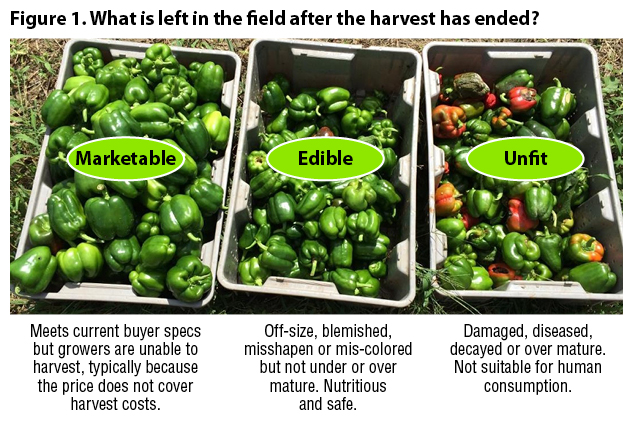
Nine fields from different small farms in Central Tennessee were sampled for tomato (round and cherry), squash (winter and summer), cucumber, sweet potato, watermelon, and kale. SoSA worked with each grower to explain the plan and help make them comfortable with gleaners working on their farm. This project sought to make gleaning worth their time and effort, while easing their concerns about potential risks. In doing so, valuable insights into growers’ concerns about gleaning and data collection were gained. Some of the issues are 1) Liability for gleaner safety and repairs to any damaged property; 2) Potential loss of privacy; 3) Reputational harm by association with “secondhand” gleaned produce; 4) Time commitment; and 5) Product food safety from harvest to distribution. Some growers also experience personal angst knowing how much food was not harvested. For this research however, the growers already support SoSA gleaning; their hesitation was being part of the study and allowing the research team to do the food loss calculations for their fields. All the data was kept anonymous beyond sharing the information about each crop with each grower.
Farm Surplus Results
The amount of usable, consisting of both marketable and edible, surplus produce calculated from the field measurements of this dataset varied considerably but was always substantial (Figure 2). Note that a lot of perfectly fresh and nutritious edible produce does not meet strict quality criteria for the fresh retail market. Unharvested edible tomato varieties averaged about 2,200 lbs/acre. At the high end, unharvested squash on one farm reached 18,000 lbs/acre. The weight of usable produce measured and left unharvested on the other farms fell in between these two values.
Using the average usable quantity of fresh produce measured for each crop type, it is possible to extrapolate to the amount of surplus fresh produce that may have been available in Tennessee over the same growing season. For example, an average amount of 2,214 pounds of usable surplus tomatoes was calculated. If that amount is multiplied across the 4,200 acres of tomato acreage reported in the state (USDA, 2022) there would be more than 9,000,000 pounds of tomatoes available for donation, upcycling, or sale. Table 1 shows the data and calculations for the measured crops.
Project Takeaways
This type of research, leveraging gleaners in the field to participate in measurement, is in the learning phase but has great potential to help farmers and consumers. Historically, farmers have participated in food loss and waste studies at low rates, possibly because of a lack of interest in the presumed low economic value or underestimated volume of the surplus crop. However, gleaning the crop for food recovery is showing itself to be a more attractive lead-in to measurement of loss as growers often want to learn about food pantries or soup kitchens where surplus food is sent. In some cases, growers have even asked gleaners to help them harvest future surplus — a promising path toward building new partnerships. The World Wildlife Fund identified additional concerns that have historically limited growers’ participation in projects that require gleaners to work on their farms (WWF, 2024).
In response to some of these concerns, EPA Region 4 in Atlanta has recently awarded a 2024-2025 grant to SoSA to create professional videos with growers teaching the proper methods to harvest prominent types of produce. The results are scheduled to be publicly available early in 2025.
Measurement can be offered as a benefit to growers who donate through gleaning organizations. Successful grower-gleaner partnerships could include detailed reports to growers including calculations of surplus potential. In addition, knowledge of potential surplus may encourage growers and their buyers to partner in new ways to capture surplus at price points that are supportive to developing new markets and vendors. Paying growers for the value of the crops gleaned and donated is another way to support and cooperate. Gleaning organizations that review these and other issues internally, in training, and with farmers before the project starts are more likely to be successful and expand their own expertise.
This study also offered a more comprehensive understanding of on-farm food loss in Tennessee. It is a valuable aid for intentionally targeting assistance in areas that include market development, value-added product assistance, and other technical guidance, such as the development of best practices. A new understanding of estimated food loss based on this work will also help with the efficiency of gleaning operations and efforts in Tennessee. The project sampling revealed that 76% of the produce left unharvested in the fields was of marketable or edible quality, perfect for food recovery and donations, suitable for sale, and valuable for social and health benefits. The results demonstrate significant opportunity for farmer income along with their suppliers, customers, and other partners. The annual potential revenue of unharvested Tennessee produce is in the many millions of dollars.
The new data also provides insight into potential policy strategies that could work to reduce usable but unharvested food in Tennessee and better ensure food is either donated or sold. Successful policy-related support in Tennessee, and piloting of practical applications, may lead to the development of a region-wide model and perhaps inspire AI-oriented predictive tools to anticipate farm surplus earlier than has ever been possible. There is a potential for the emergence of a more structured national model for other states to customize for reducing food loss. Benefits to nonprofits working in food recovery, such as SoSA and other gleaning organizations, are potentially significant. More data that identify and describe the vast supply of available unharvested food may enable these organizations to raise funds that increase their capacity for food recovery. The food and nutrition sectors need more studies of this type to create the foundation for new and improved ways for the industry to recover more food and feed more people where unmet demand exists.
Thomas O’Donnell is a Sustainability Coordinator at USEPA – NEWS in Philadelphia, and an applied research scientist at Cabrini University where he helps find solutions for reducing food loss and waste. Jeannie Hunter is Regional Director at the Society of St. Andrew (SoSA) in Nashville, TN. SoSA gleans food that may otherwise go to waste, distributing it to hunger relief organizations. Lisa Johnson, Principal at Lisa K. Johnson Consulting, Raleigh, NC, works with growers, academics, nonprofits, and government to further understand why food sometimes does not reach consumers and can be left unharvested.. Kim Charick, Sustainable Materials Management Project Manager at the USEPA, Atlanta, Georgia, focuses on strengthening the recycling infrastructure to recover, prevent and reduce food waste, working with state recycling organizations, local governments, businesses, nonprofits, and academia.
Disclaimer: Any views expressed in this report do not necessarily represent those of the United States government or the Environmental Protection Agency. Mention of trade names or commercial products does not constitute endorsement or recommendation for use.


